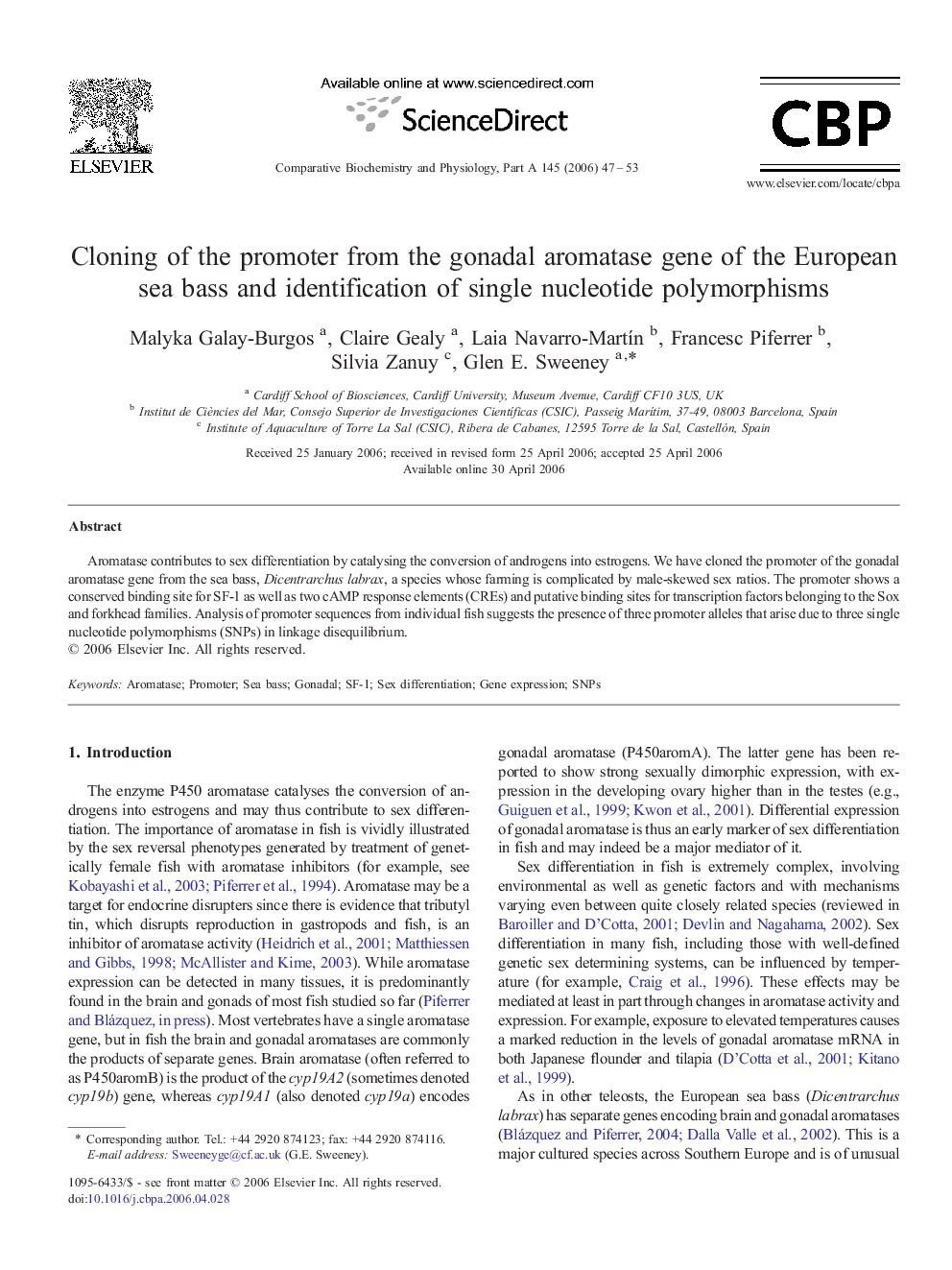| Article ID | Journal | Published Year | Pages | File Type |
|---|---|---|---|---|
| 1974315 | Comparative Biochemistry and Physiology Part A: Molecular & Integrative Physiology | 2006 | 7 Pages |
Abstract
Aromatase contributes to sex differentiation by catalysing the conversion of androgens into estrogens. We have cloned the promoter of the gonadal aromatase gene from the sea bass, Dicentrarchus labrax, a species whose farming is complicated by male-skewed sex ratios. The promoter shows a conserved binding site for SF-1 as well as two cAMP response elements (CREs) and putative binding sites for transcription factors belonging to the Sox and forkhead families. Analysis of promoter sequences from individual fish suggests the presence of three promoter alleles that arise due to three single nucleotide polymorphisms (SNPs) in linkage disequilibrium.
Related Topics
Life Sciences
Biochemistry, Genetics and Molecular Biology
Biochemistry
Authors
Malyka Galay-Burgos, Claire Gealy, Laia Navarro-Martín, Francesc Piferrer, Silvia Zanuy, Glen E. Sweeney,
